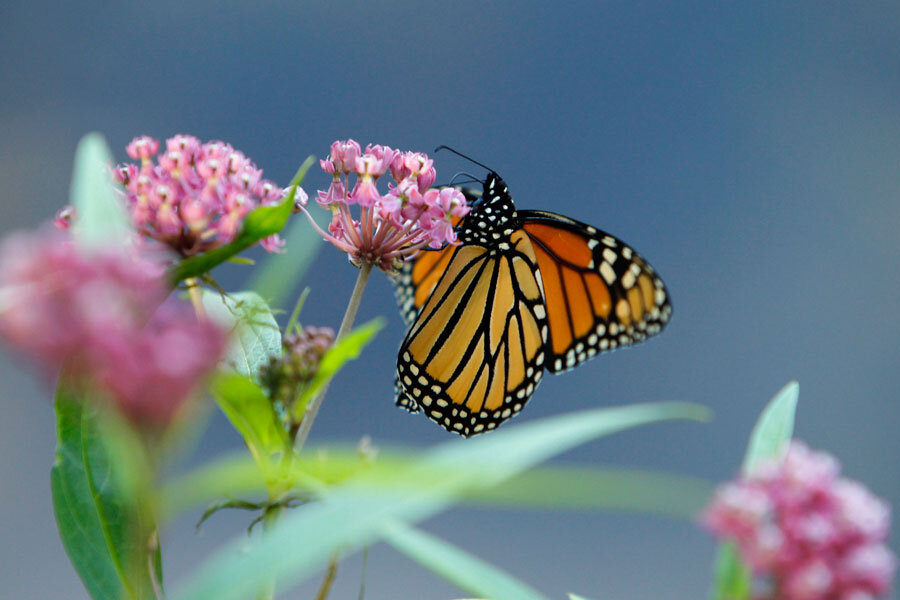Dwindling North American monarchs begin 3,000-mile journey
Loading...
The month of September marks the beginning of a 3-month, 3,000-mile migration for the monarch butterfly from Canada and the United States down to Mexico.
The annual journey this September is especially notable in light of serious population declines. Since 1997, the estimated monarch population has decreased from one billion to 56.6 million.
The monarchs’ only habitat and food supply, the milkweed plant, is quickly being eradicated through the use of glyphosate, the primary ingredient in Monsanto's popular weed-killing herbicide Roundup.
Scientists say the correlation is simple: no milkweed, no monarchs.
"The monarch population that overwinters in Mexico has plummeted more than 90 percent in two decades – it is a perilous decline," said Rebecca Riley, an attorney with the National Resource Defense Council (NRDC), in a June press release.
"The drop is linked to the destruction of monarch habitat, as massive use of glyphosate in farm fields along the 'Butterfly Highway' through the U.S. and Canada has killed the milkweed plants monarch caterpillars need to survive. To preserve the spectacular monarch migration, we must act quickly, rather than spend years in deliberation as the crisis worsens."
But more time to deliberate is just what the US Environmental Protection Agency (EPA) says it needs.
In June the EPA announced that it will spend the next five years studying the effects of Roundup on more than 1,500 endangered species, as well as the monarch. This study is the result of a settlement between the EPA and the Center for Biological Diversity, a San Francisco-based group that sued the agency in 2007 for violating the Endangered Species Act.
"The EPA apparently plans to study the monarch migration to extinction,” said Dr. Sylvia Fallon in June, an NRDC senior scientist and director of its Wildlife Conservation Project. “It’s inexcusable for the EPA to call for more time to show glyphosate’s harm while at the same time approving new glyphosate-based pesticides that kill the sole food source monarchs need to live.”
Mexico is joining environmental advocacy groups to point fingers at the US agency.
“To halt the destruction of milkweed, more must be done by our neighbors to the north to conserve the butterfly so the monarch migration to Mexico not only survives but thrives," says Homero Aridjis, president of Grupo de los Cien, Mexico’s most influential environmental advocacy group.
How can you help?
The National Fish & Wildlife Service encourages butterfly sympathizers to sow their own milkweed gardens.
"Every little bit helps," says Karen Viste-Sparkman, a wildlife biologist at the Neal Smith Refuge in Iowa. "It doesn’t take a huge number of plants in any one place to help monarchs, especially during migration."
Chip Taylor, the director of Monarch Watch, an organization based at the University of Kansas, connects milkweed gardeners across the country. Participants can register with Taylor’s Monarch Waystation program and receive a seed kit to create their own monarch habitat.
"Everyone loves the monarchs, including the Obama White House," said Dr. Fallon. "But love isn’t going to save monarchs from glyphosate."







